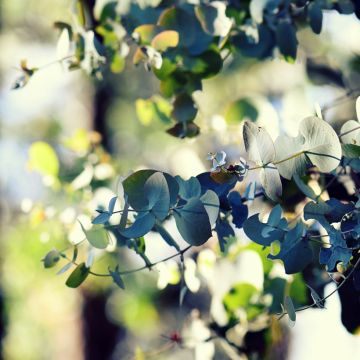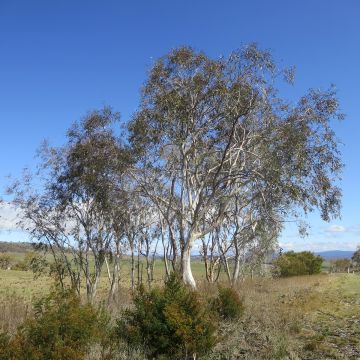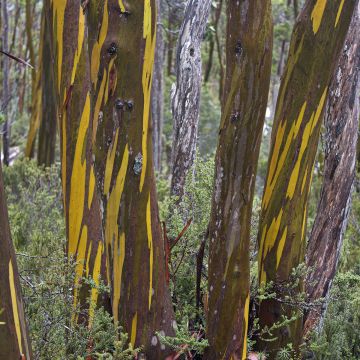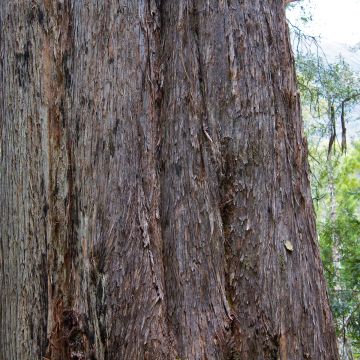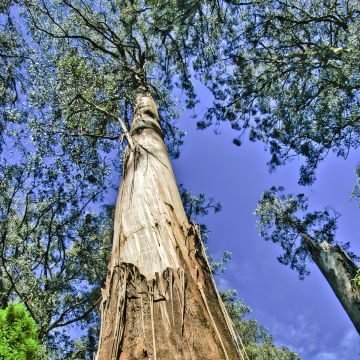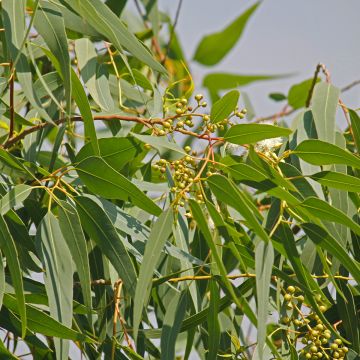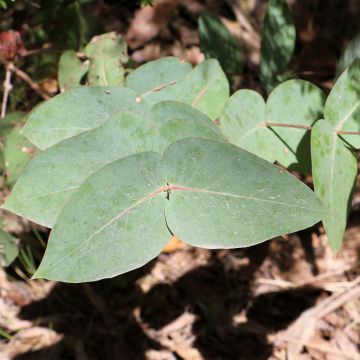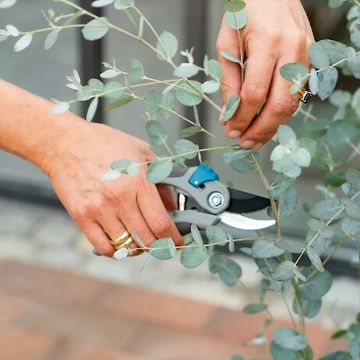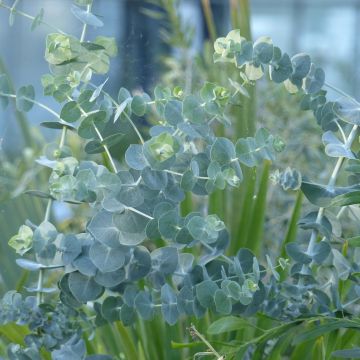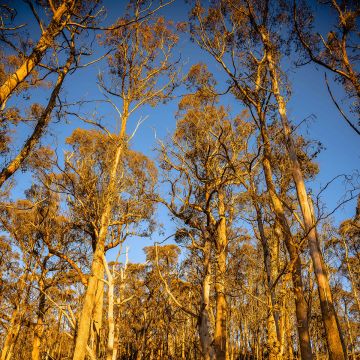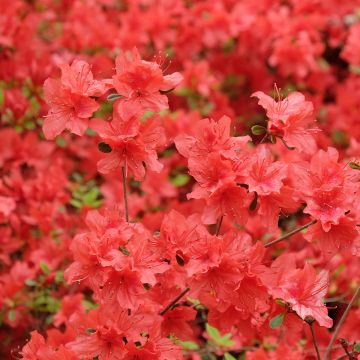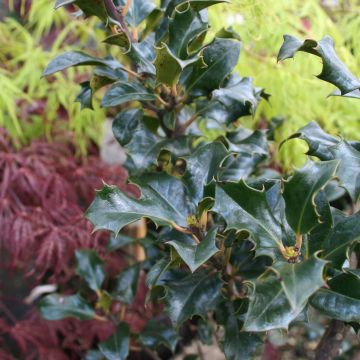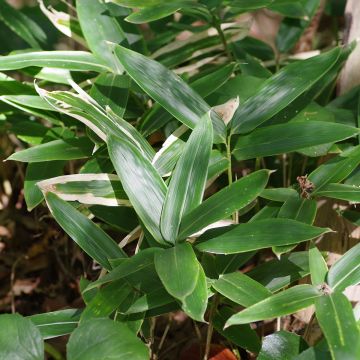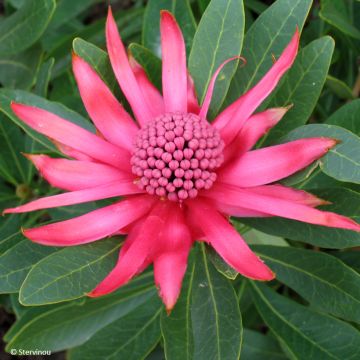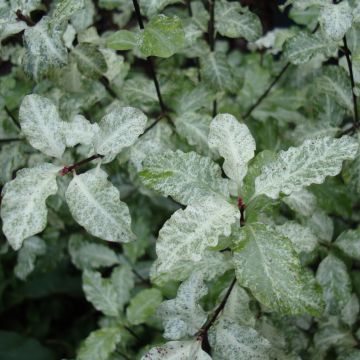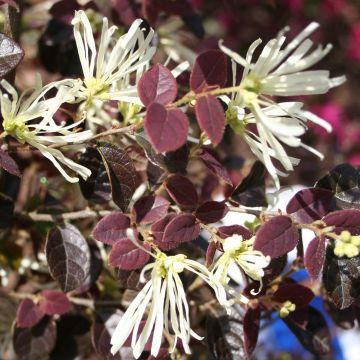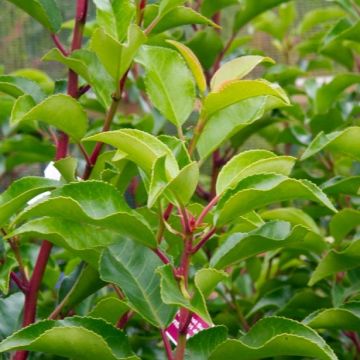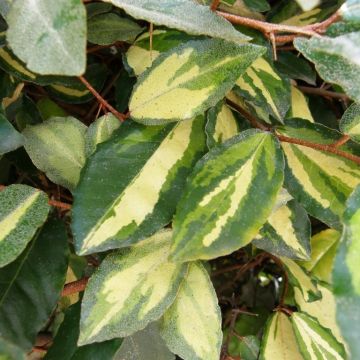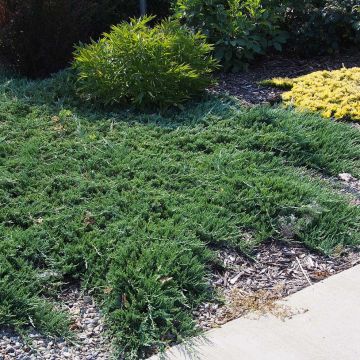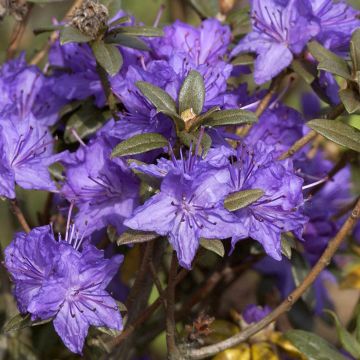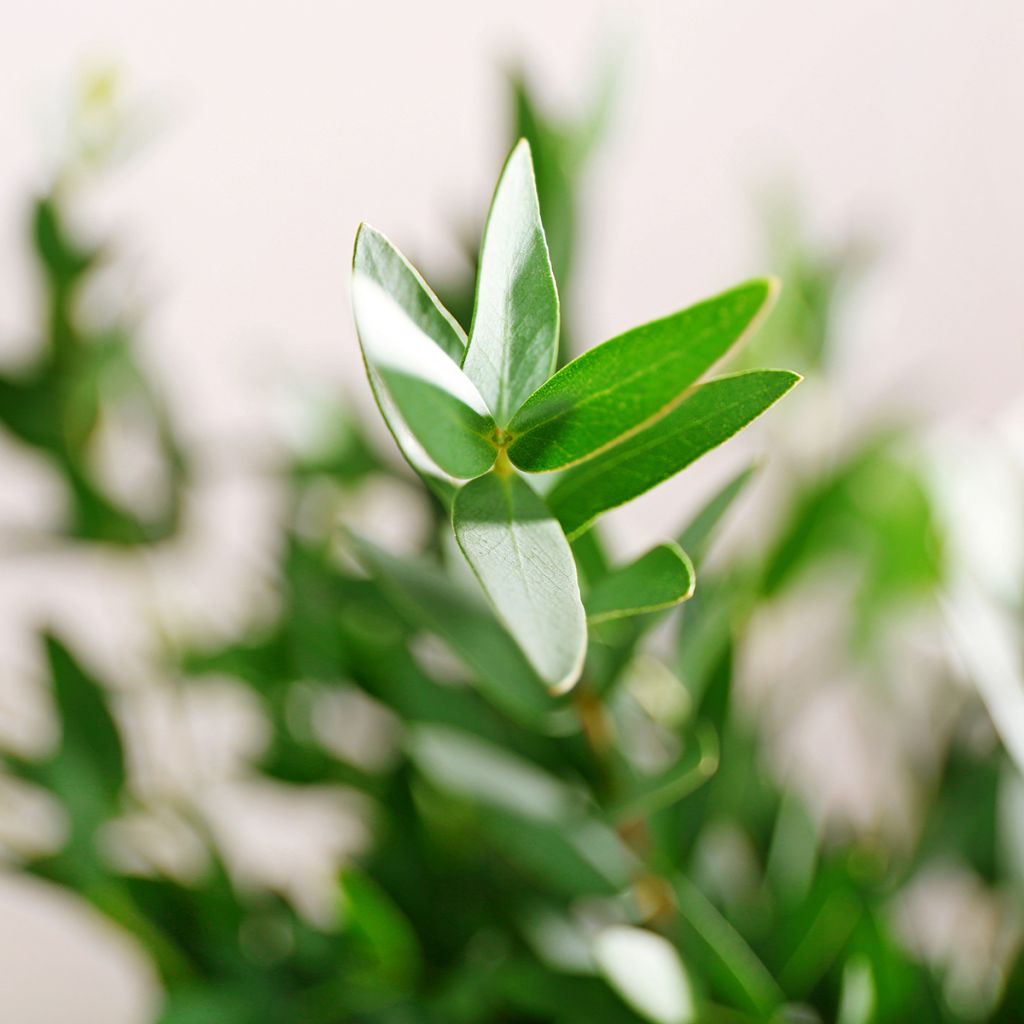

Eucalyptus parviflora
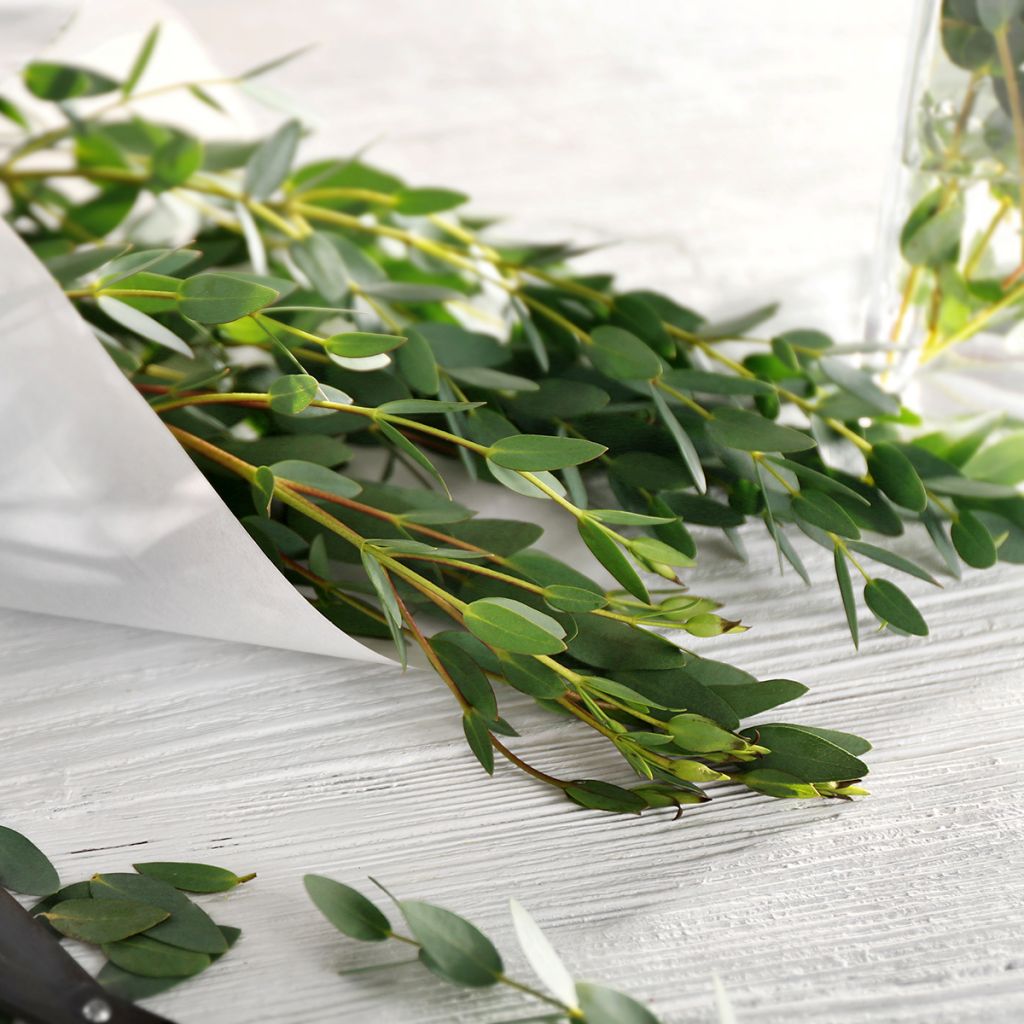

Eucalyptus parviflora
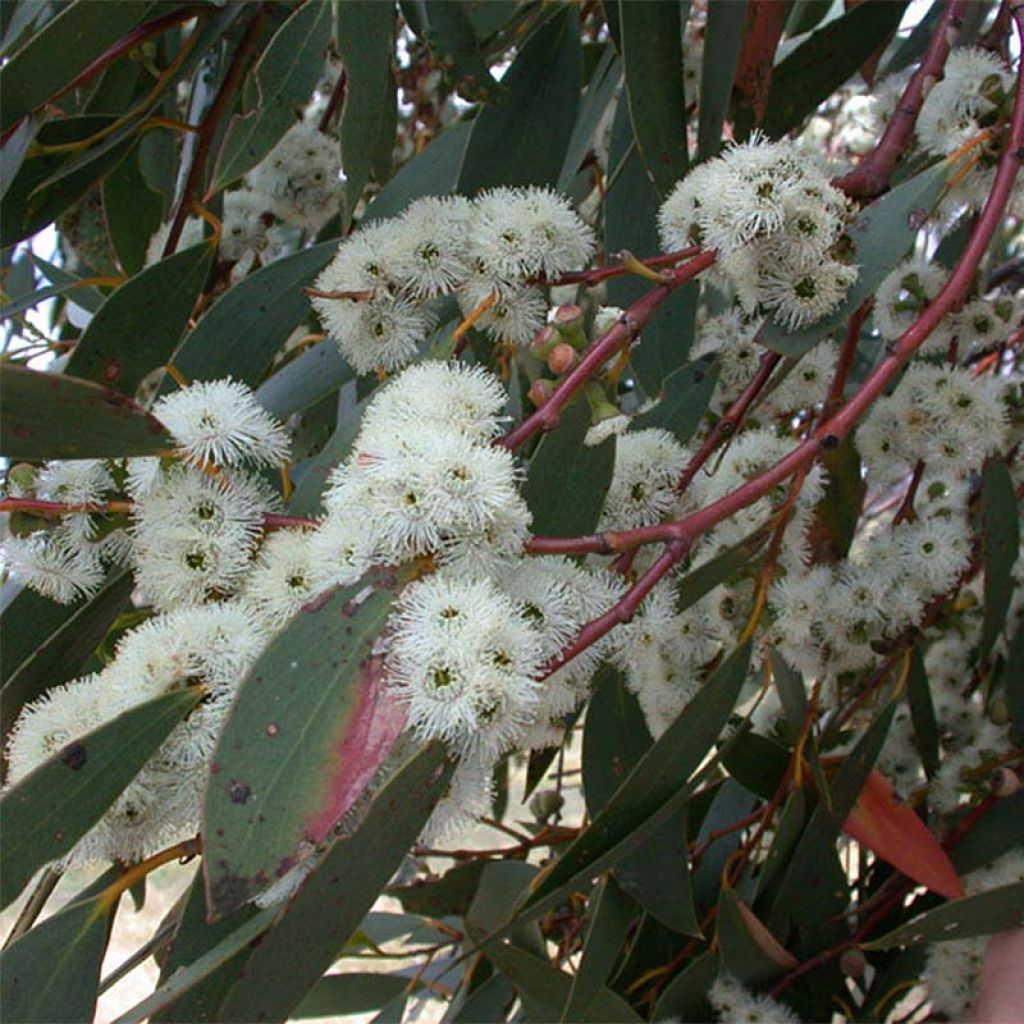

Eucalyptus parviflora
Eucalyptus parviflora
Eucalyptus parvula
Small-leaved Snow Gum
Nice little eucalyptus planted in January that has coped very well with this period not recommended for planting in the ground. Very satisfied, but I regret having taken a really small young plant (30 cm). It has grown by 5 cm in 5 months.
BD , 15/06/2024
Order in the next for dispatch today!
Dispatch by letter from €3.90.
Delivery charge from €5.90 Oversize package delivery charge from €6.90.
Current delivery delay: 1 day.
More information
This item is not available in your country.
Schedule delivery date,
and select date in basket
This plant carries a 24 months recovery warranty
More information
We guarantee the quality of our plants for a full growing cycle, and will replace at our expense any plant that fails to recover under normal climatic and planting conditions.
From €5.90 for pickup delivery and €6.90 for home delivery
Express home delivery from €8.90.
From €5.90 for pickup delivery and €6.90 for home delivery
Express home delivery from €8.90.
Does this plant fit my garden?
Set up your Plantfit profile →
Description
Eucalyptus parviflora (syn. parvula), also known as Small-leaved Gum, is a hardy species, tolerant of a wide range of soils and drought-resistant. It will also adapt to cool and humid summers. If space is limited in your garden and you dream of having a Eucalyptus, then adopt this small evergreen tree with a slightly twisted habit and trailing branches. It is robust, low-maintenance, and attractive all year round: its young branches are reddish, its beautiful grey bark peels off in long ribbons, revealing a brand new bark with varying colours and its persistent sickle-shaped leaves are a beautiful olive green. At the end of summer, autumn, or even winter It blooms in cream-white pompon-shaped flowers, in warm climates.
The Small-leaved Gum is a small tree from the myrtle family, native to the plateaus of New South Wales and Victoria in Australia. This ornamental and easy-to-grow species shows rapid growth and a rather spreading habit. Relatively modest in size for the genus, this gum tree develops a twisted trunk, with low branches that form a dense, bushy, and sometimes trailing crown. It will reach a height of 8 to 12m (26 ft 2 in to 39 ft 5 in) and a spread of 7m (23 ft) at maturity, but can be kept more compact through appropriate pruning.
The reddish young branches of this eucalyptus bear aromatic evergreen foliage. The juvenile leaves are glaucous green, opposite, ovate, and slightly pointed. The adult leaves are narrow, 5cm (2 in) long and 0.5cm (0.2 in) wide, olive green, alternate, and lanceolate in shape, like sickles. Flowering occurs between late August and November-December on plants that are a few years old. These are actually petal-less, round flowers, composed of numerous cream-white stamens tightly packed like 1cm (0.4 in) diameter pompons. They open between the leaves, grouped in threes along the branches, and are followed by the formation of large green cone-shaped fruits that turn brown when ripe. The old grey bark peels off every year, maintaining a decorative appearance for a long period. Unlike other species, Eucalyptus parviflora tolerates heavy, poorly drained, poor, and chalky soils, and snowy winters.
The Small-leaved Gum thrives in both semi-mountainous and semi-arid climates in summer, and its cold resistance goes down to -18/-20°C (-4 °F) (-0.4/-4 °F). Eucalyptus trees are generally heavy water consumers, even in winter, contributing to soil drying, however, their resistance to summer drought is proven in Mediterranean climates. Due to its beautiful habit, Eucalyptus parviflora makes a beautiful evergreen screen at the back of flower beds or at the boundaries of the garden, including by the seaside. It brings a touch of exoticism to the garden, just like some hardy oleanders (Luteum Plenum, 'Provence', 'Atlas'). But it is as a standalone tree that this small tree will be most appreciated, due to its twisted habit, remarkable bark, and elegant foliage.
Report an error about the product description
Eucalyptus parviflora in pictures
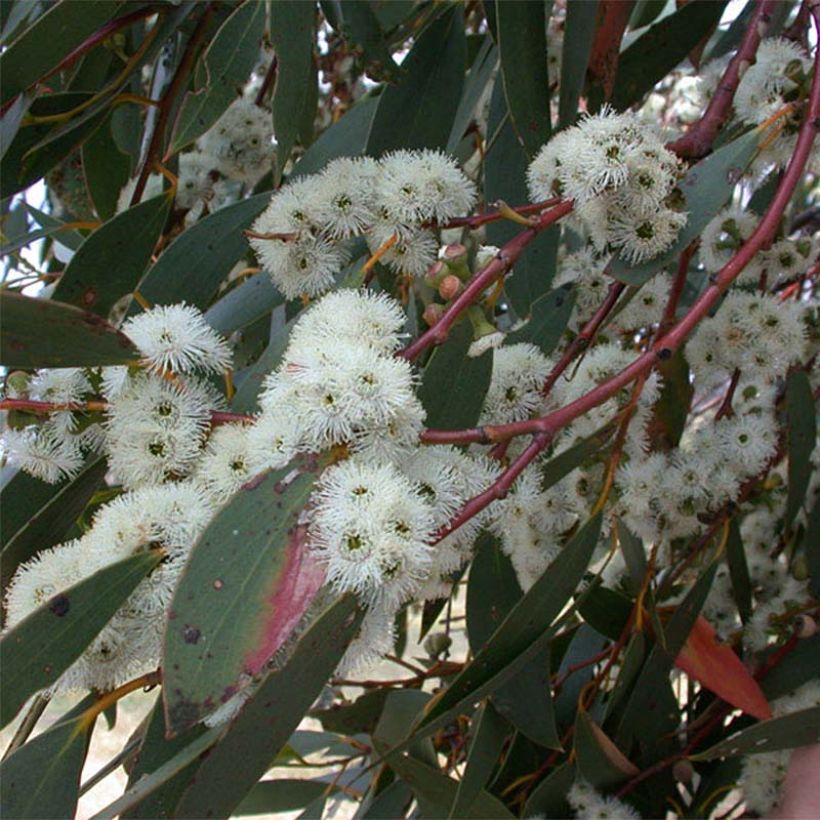

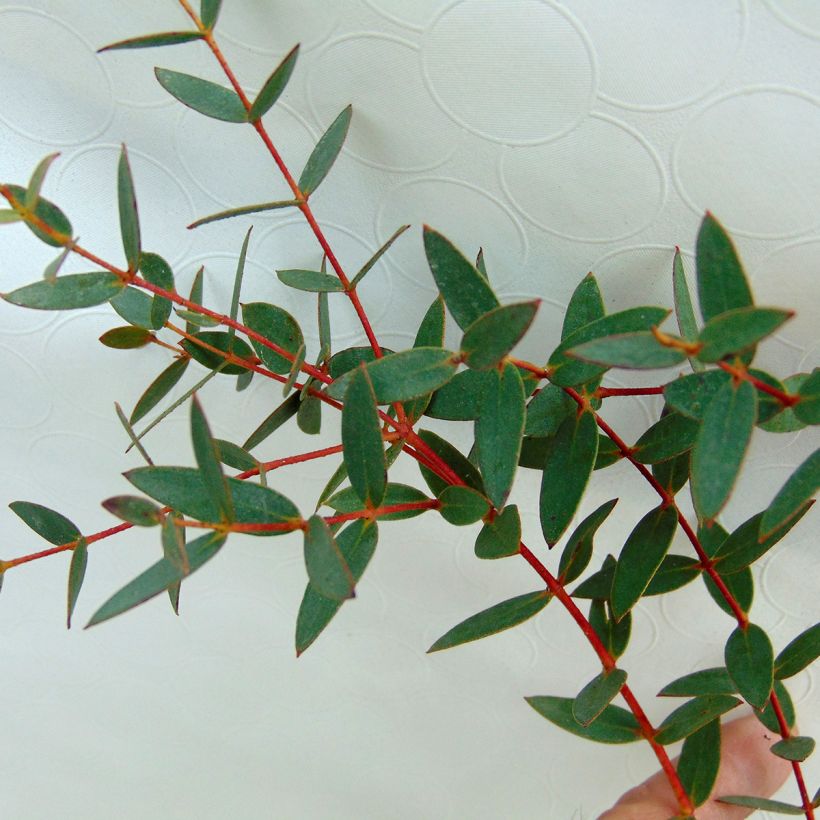

Plant habit
Flowering
Foliage
Botanical data
Eucalyptus
parvula
Myrtaceae
Small-leaved Snow Gum
Australia
Other Eucalyptus
Planting and care
Eucalyptus parvula is best planted in early spring in cold regions, early autumn in dry and hot climates. Plant it in well-prepared ordinary soil, from moist to dry, in a warm and sunny location. It is indifferent to the nature of the soil, hardy below -15°C (5 °F), and not afraid of snow. In most regions, you can plant it in the ground, possibly improving drainage with coarse sand, pumice or gravel. Then let nature take its course, as the growth is quite rapid. Water regularly for the first two years, then the bush can do without watering in summer. Fertilization is not recommended. Pruning is not necessary and even discouraged, to allow the unique habit of this superb eucalyptus to express itself. However, you can coppice this small tree to form a large bush with limited height. Eucalyptus trees are useful for drying out wet areas, as they are large water consumers even in winter. However, they are resistant to drought once well established and generally thrive in a Mediterranean-type climate.
A young plant takes root most easily in the ground. The deep root system of the Eucalyptus does not like to be disturbed. Choose its final location carefully.
Planting period
Intended location
Care
-
, onOrder confirmed
Reply from on Promesse de fleurs
Evergreen shrubs
Haven't found what you were looking for?
Hardiness is the lowest winter temperature a plant can endure without suffering serious damage or even dying. However, hardiness is affected by location (a sheltered area, such as a patio), protection (winter cover) and soil type (hardiness is improved by well-drained soil).

Photo Sharing Terms & Conditions
In order to encourage gardeners to interact and share their experiences, Promesse de fleurs offers various media enabling content to be uploaded onto its Site - in particular via the ‘Photo sharing’ module.
The User agrees to refrain from:
- Posting any content that is illegal, prejudicial, insulting, racist, inciteful to hatred, revisionist, contrary to public decency, that infringes on privacy or on the privacy rights of third parties, in particular the publicity rights of persons and goods, intellectual property rights, or the right to privacy.
- Submitting content on behalf of a third party;
- Impersonate the identity of a third party and/or publish any personal information about a third party;
In general, the User undertakes to refrain from any unethical behaviour.
All Content (in particular text, comments, files, images, photos, videos, creative works, etc.), which may be subject to property or intellectual property rights, image or other private rights, shall remain the property of the User, subject to the limited rights granted by the terms of the licence granted by Promesse de fleurs as stated below. Users are at liberty to publish or not to publish such Content on the Site, notably via the ‘Photo Sharing’ facility, and accept that this Content shall be made public and freely accessible, notably on the Internet.
Users further acknowledge, undertake to have ,and guarantee that they hold all necessary rights and permissions to publish such material on the Site, in particular with regard to the legislation in force pertaining to any privacy, property, intellectual property, image, or contractual rights, or rights of any other nature. By publishing such Content on the Site, Users acknowledge accepting full liability as publishers of the Content within the meaning of the law, and grant Promesse de fleurs, free of charge, an inclusive, worldwide licence for the said Content for the entire duration of its publication, including all reproduction, representation, up/downloading, displaying, performing, transmission, and storage rights.
Users also grant permission for their name to be linked to the Content and accept that this link may not always be made available.
By engaging in posting material, Users consent to their Content becoming automatically accessible on the Internet, in particular on other sites and/or blogs and/or web pages of the Promesse de fleurs site, including in particular social pages and the Promesse de fleurs catalogue.
Users may secure the removal of entrusted content free of charge by issuing a simple request via our contact form.
The flowering period indicated on our website applies to countries and regions located in USDA zone 8 (France, the United Kingdom, Ireland, the Netherlands, etc.)
It will vary according to where you live:
- In zones 9 to 10 (Italy, Spain, Greece, etc.), flowering will occur about 2 to 4 weeks earlier.
- In zones 6 to 7 (Germany, Poland, Slovenia, and lower mountainous regions), flowering will be delayed by 2 to 3 weeks.
- In zone 5 (Central Europe, Scandinavia), blooming will be delayed by 3 to 5 weeks.
In temperate climates, pruning of spring-flowering shrubs (forsythia, spireas, etc.) should be done just after flowering.
Pruning of summer-flowering shrubs (Indian Lilac, Perovskia, etc.) can be done in winter or spring.
In cold regions as well as with frost-sensitive plants, avoid pruning too early when severe frosts may still occur.
The planting period indicated on our website applies to countries and regions located in USDA zone 8 (France, United Kingdom, Ireland, Netherlands).
It will vary according to where you live:
- In Mediterranean zones (Marseille, Madrid, Milan, etc.), autumn and winter are the best planting periods.
- In continental zones (Strasbourg, Munich, Vienna, etc.), delay planting by 2 to 3 weeks in spring and bring it forward by 2 to 4 weeks in autumn.
- In mountainous regions (the Alps, Pyrenees, Carpathians, etc.), it is best to plant in late spring (May-June) or late summer (August-September).
The harvesting period indicated on our website applies to countries and regions in USDA zone 8 (France, England, Ireland, the Netherlands).
In colder areas (Scandinavia, Poland, Austria...) fruit and vegetable harvests are likely to be delayed by 3-4 weeks.
In warmer areas (Italy, Spain, Greece, etc.), harvesting will probably take place earlier, depending on weather conditions.
The sowing periods indicated on our website apply to countries and regions within USDA Zone 8 (France, UK, Ireland, Netherlands).
In colder areas (Scandinavia, Poland, Austria...), delay any outdoor sowing by 3-4 weeks, or sow under glass.
In warmer climes (Italy, Spain, Greece, etc.), bring outdoor sowing forward by a few weeks.


































